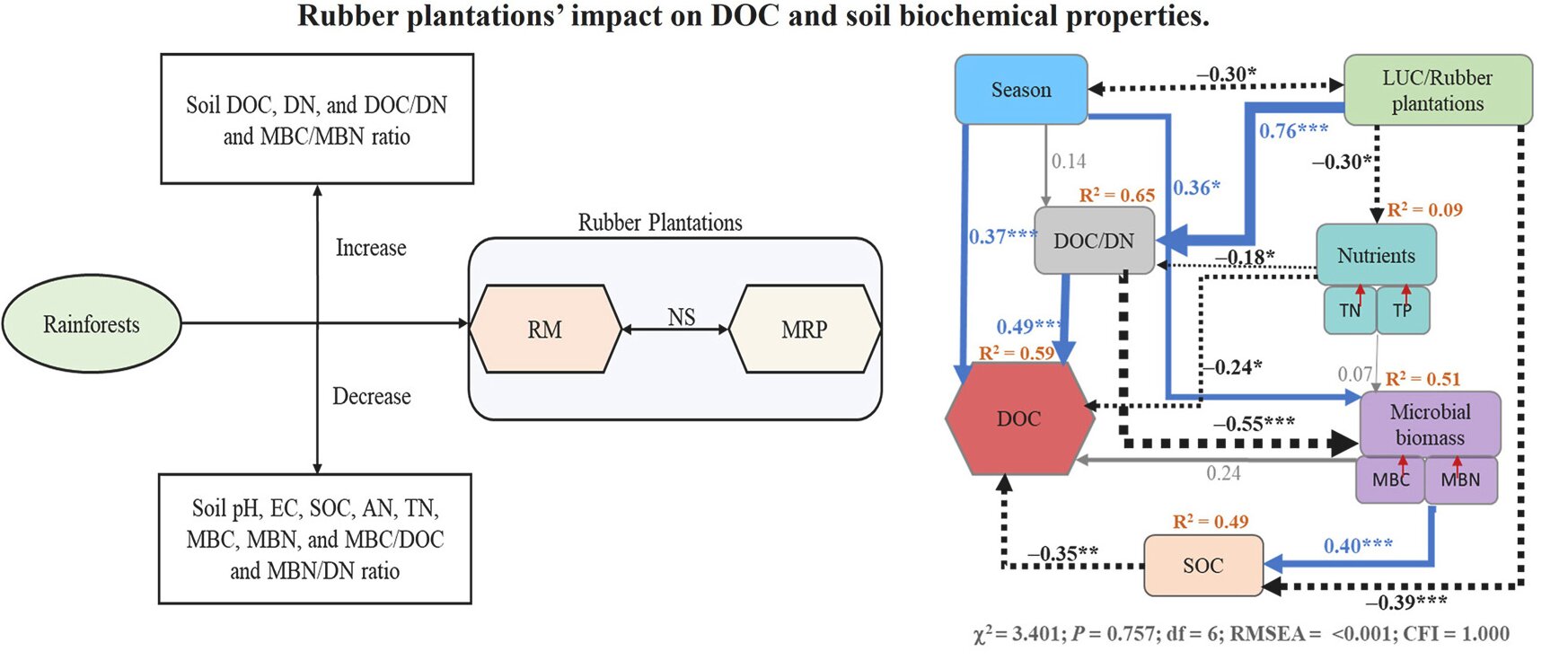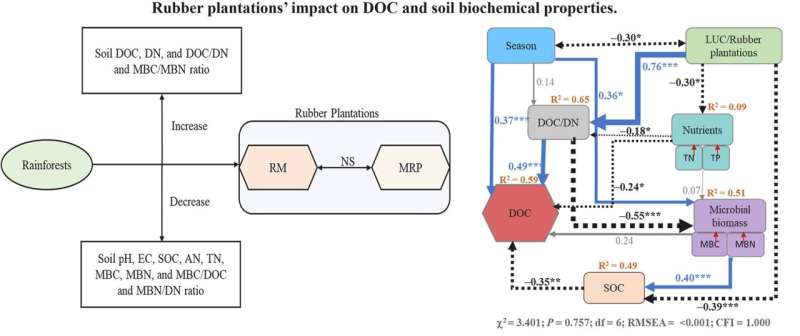

Rubber planting brings huge economic benefits, but large-scale rubber plantations have a great impact on the ecological environment, especially in terms of the soil’s physical and chemical properties.
In a study published in the Journal of Environmental Management, researchers from Xishuangbanna Tropical Botanical Garden (XTBG) examined the impacts of rainforest conversion to rubber plantations on soil dissolved organic carbon (DOC), one of the most mobile organic matter (OM) in the terrestrial ecosystem that causes the transformation and migration of carbon, and the ratio of carbon and nitrogen (C:N).
They also explored how such conversion mediated these impacts by altering soil biogeochemical properties.
The researchers evaluated the effects of different land use types on soil DOC and other soil chemical properties by comparing soil samples from rubber monocultures, mixed rubber plantations (Hevea brasiliensis, Ficus langkokensis, and Actinodaphne henryi), and reference rainforests.
To explore the role of micro-organisms in the transformation process of DOC, they further analyzed the relationships between microbial biomass carbon (MBC) and nitrogen (MBN) with the DOC/DN ratio.
Their results showed that rainforest conversion to rubber plantations led to an increase in soil DOC concentration and a decrease in soil organic carbon (SOC) and nutrients, which in turn increased the loss of DOC as its utilization by micro-organisms was limited.
The rubber plantations had 150%–200% higher DOC concentration despite having 38.5% lower SOC concentration than in rainforests, which indicated the lower adsorption potential of soils in rubber plantations than in rainforests, according to the study.
In addition, the establishment of rubber agroforestry caused degradation of major soil properties including decreased pH, electrical conductivity, soil organic carbon, available nitrogen, available phosphorus, total nitrogen and total phosphorus, which were significantly negatively correlated with DOC.
The researchers thus proposed to optimize plant density and introduce nitrogen-fixing legumes intercropping in rubber plantations, so as to improve soil health and reduce the loss of DOC and its potential environmental impacts.
More information:
Ashutosh Kumar Singh et al, The detrimental effect of rainforest conversion to rubber plantations on soil dissolved organic carbon and C: N stoichiometry, mediated by altered soil biogeochemistry, Journal of Environmental Management (2024). DOI: 10.1016/j.jenvman.2024.122965
Provided by
Chinese Academy of Sciences
Citation:
Rubber plantations increase leaching of dissolved organic carbon in soil, study finds (2024, November 4)
retrieved 4 November 2024
from https://phys.org/news/2024-11-rubber-plantations-leaching-dissolved-carbon.html
This document is subject to copyright. Apart from any fair dealing for the purpose of private study or research, no
part may be reproduced without the written permission. The content is provided for information purposes only.